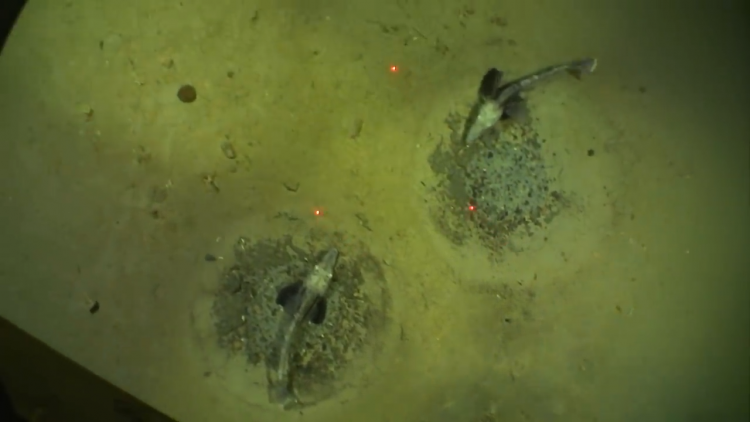A vast fish colony discovered beneath the ice covering Antarctica's Weddell Sea is the world's largest known breeding site for fish.
The German research vessel Polarstern was scanning the seafloor in February 2021 using a towed camera system that goes more than 1,000 feet below the sea's surface and transmits images up to the deck for viewing by researchers onboard.
On the ship's monitors, scientists saw an unexpected find: a massive number of icefish nests that seemed to go on forever in all directions.
"The idea that such a huge breeding area of icefish in the Weddell Sea was previously undiscovered is totally fascinating," Autun Purser, a deep-sea biologist at the Wegener Institute, Helholtz Center for Polar and Marine Research and lead author of the study, said in a statement.
"After the spectacular discovery of the many fish nests, we thought about a strategy on board to find out how large the breeding area was - there was literally no end in sight.
This week, the researchers published their findings in the journal Current Biology, describing the colony as having a "globally unprecedented extent."
During a four-hour dive, the camera captured over 16,000 nests. According to the researchers, mapping of the area reveals that the total number of fish nests is around 60 million spread across 92 square miles of seabed, making it the largest such breeding colony ever discovered.
Researchers were initially drawn to the location because of upwelling, a phenomenon in which wind and currents lift cold water to the surface, causing the water to be 2 degrees Celsius warmer than the surrounding area.
Purser hypothesized that the fish could use the warmer water as a navigational tool to assist them track the colony.
Round fish nests measuring around 6 inches deep and 29 inches in diameter were found on the seafloor roughly every 10 inches by researchers.
Active nests with 1,500 to 2,500 eggs guarded by adult icefish, empty nests with just eggs, and active nests with 1,500 to 2,500 eggs guarded by adult icefish were all seen. Notothenioid icefish carved the nests into the mud.
The researchers are calling for the creation of a regional marine protected area in Antarctica to protect the unique ecosystem from fishing and intrusive research.
For the next two years, cameras will keep an eye on the ecosystem to see how it works and how it interacts with other ecosystems. They plan to return to the area in April 2022 to scan the surrounding waterways and see if the fish reproduce in the same nests again.






